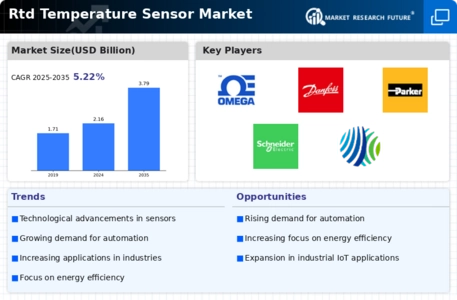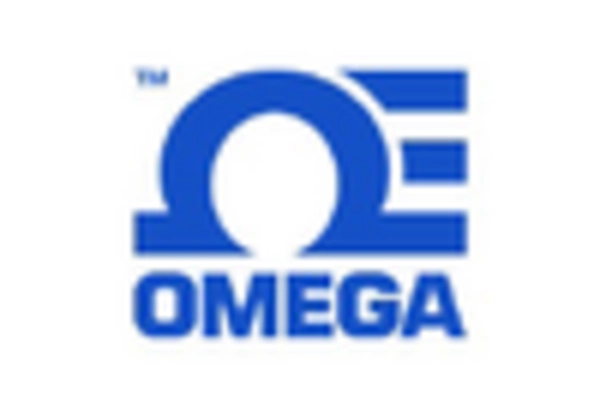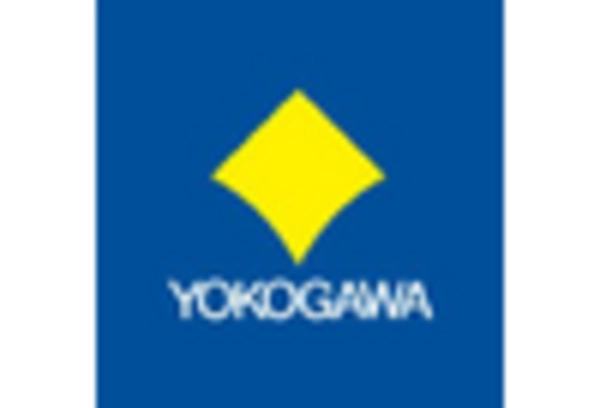Rising Demand in Process Industries
The RTD Temperature Sensor Market is experiencing a notable surge in demand, particularly within process industries such as oil and gas, chemicals, and pharmaceuticals. These sectors require precise temperature measurements to ensure optimal operational efficiency and product quality. As industries increasingly adopt automation and advanced monitoring systems, the need for reliable temperature sensors becomes paramount. According to recent data, the process industries account for a substantial share of the RTD temperature sensor market, indicating a robust growth trajectory. This trend is likely to continue as companies strive to enhance productivity and reduce operational costs, thereby driving the demand for RTD temperature sensors.
Expansion of Renewable Energy Sector
The expansion of the renewable energy sector is emerging as a pivotal driver for the RTD Temperature Sensor Market. As the world shifts towards sustainable energy sources, the need for efficient temperature monitoring in solar, wind, and geothermal energy systems is becoming increasingly critical. RTD temperature sensors are essential for optimizing the performance of these systems, ensuring they operate within safe temperature ranges. The growth of renewable energy projects is likely to create new opportunities for RTD sensor manufacturers, as these technologies require reliable temperature measurement solutions to enhance efficiency and reliability.
Growing Emphasis on Safety and Compliance
Safety regulations and compliance standards are becoming increasingly stringent across various sectors, significantly impacting the RTD Temperature Sensor Market. Industries such as food and beverage, pharmaceuticals, and energy are mandated to adhere to specific temperature control measures to ensure product safety and quality. This regulatory landscape drives the adoption of RTD temperature sensors, as they provide reliable and accurate temperature readings essential for compliance. The market is expected to grow as companies invest in high-quality sensors to meet these regulations, thereby enhancing their operational safety and product integrity.
Technological Advancements in Sensor Design
Technological innovations are playing a crucial role in shaping the RTD Temperature Sensor Market. The development of advanced materials and miniaturization techniques has led to the creation of more accurate and durable sensors. These advancements not only improve measurement precision but also enhance the sensors' resistance to environmental factors such as humidity and corrosive substances. Furthermore, the integration of digital technologies into RTD sensors allows for better data acquisition and analysis, which is increasingly sought after in various applications. As a result, the market is likely to witness a shift towards more sophisticated sensor solutions that cater to the evolving needs of industries.
Increased Investment in Research and Development
Investment in research and development is significantly influencing the RTD Temperature Sensor Market. Companies are allocating substantial resources to innovate and improve sensor technologies, aiming to enhance performance and reduce costs. This focus on R&D is expected to lead to the introduction of next-generation RTD sensors that offer superior accuracy, faster response times, and greater durability. As industries continue to seek advanced solutions to meet their operational challenges, the emphasis on R&D will likely drive market growth, fostering a competitive landscape where innovation is key to success.

















Leave a Comment